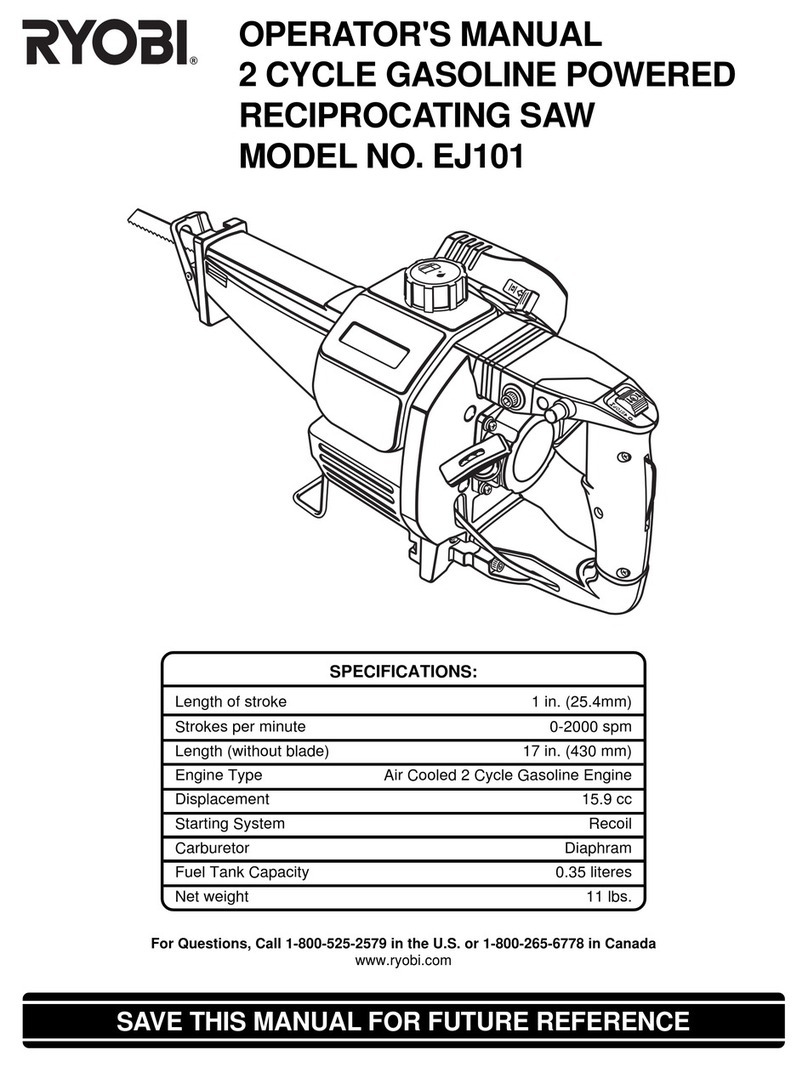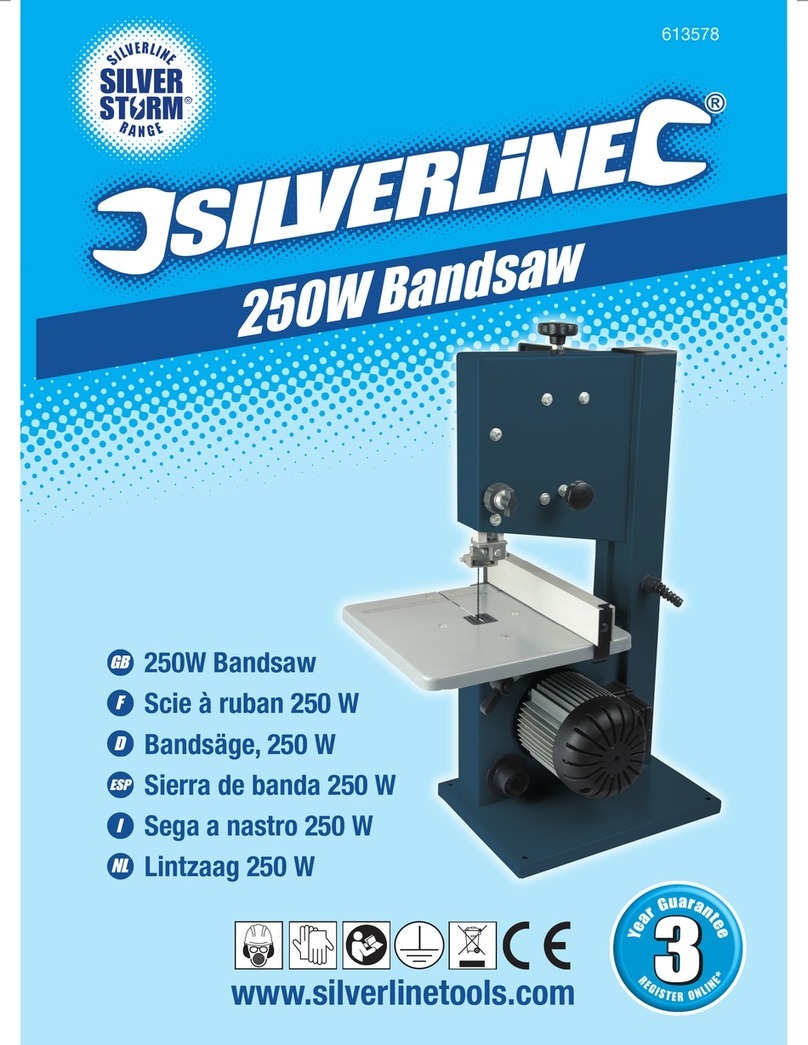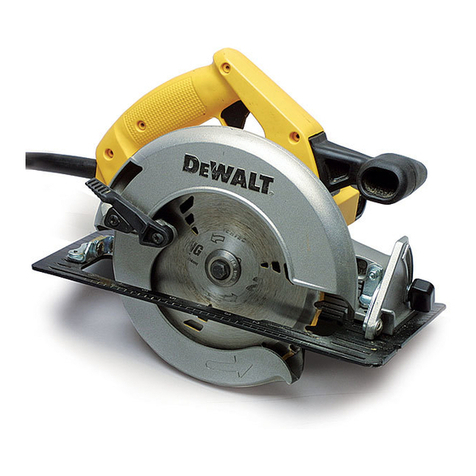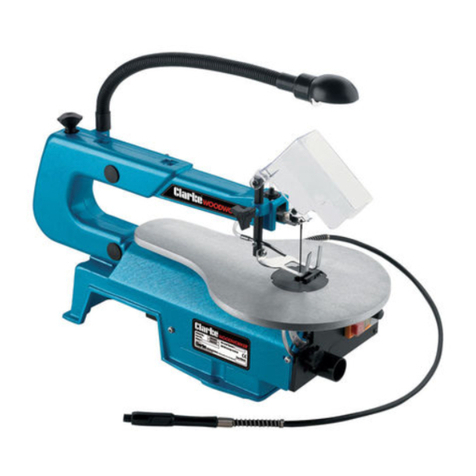COUP’ECO Lamiers 700 Series Operating instructions

Issue September 2015
SERIES 700
TRANSLATION OF THE ORIGINAL
USER'S AND MAINTENANCE MANUAL
SERIAL No : 04.15.688
TYPE : 04.200.602

Saw Head Series 700 Issue September 2015 page 1
Dear User,
Thank you for your trust! We hope that your Saw Head will prove fully satisfactory.
Taking a few minutes to read these instructions will ensure that you can:
Get the most out of the performance of your Saw Head,
Preserve its service life,
Work in complete safety.
This manual comprises a description of how to use and maintain the Saw Head in the widest possible
configuration. Consequently, the basic Saw Head version and its accessories may vary. For more
information on the equipment levels available in the market place, please contact your nearest
dealer.
If you have any question, please don't hesitate to contact your dealer.
When your Saw Head was delivered, your dealer will have given you a start-up form. If your dealer
did not give you this document, please request it right away. This document will be necessary for any
work performed under the warranty.
The start-up form shows:
Whether the user's and maintenance manual comprising the CE declaration of conformity was
given to you.
Whether the spare parts manual was given to you.
Whether you were informed of the conditions of use and warned about the safety rules to be
complied with.
In cases where one of these requirements was neglected, it is up to you to contact your dealer right
away.

Saw Head Series 700 Issue September 2015 page 2
Contents
I - CE DECLARATION OF CONFORMITY Regarding self certified equipment .............................................................3
II - INTRODUCTION.........................................................................................................................................................4
2-1/ Characteristics and manual updates...................................................................................................................4
2-2/ Retaining the manual..........................................................................................................................................4
III - USING THE SAW HEAD FOR ITS DESIGNED PURPOSE ........................................................................................5
IV - SYMBOLS USED.......................................................................................................................................................6
4-1/ Meaning of the symbols found in this manual......................................................................................................6
4-2/ Meaning of the symbol affixed to the Saw Head..................................................................................................6
V - LOCATING THE RATING PLATE...............................................................................................................................7
VI - SAFETY INSTRUCTIONS..........................................................................................................................................8
6-1/ General safety instructions.................................................................................................................................8
6-2/ Checking the conformity of the cutter prior to starting, every time it is run............................................................8
6-3/ Prior inspection of the work area.........................................................................................................................8
6-4/ Characteristics of the ground that the carrier can operate on ..............................................................................8
6-5/ General operating instructions............................................................................................................................9
6-6/ Site safety instructions........................................................................................................................................9
6-7/ Maintenance instructions..................................................................................................................................10
6-8/ Warnings..........................................................................................................................................................11
VII - EQUIPMENT DESCRIPTION..................................................................................................................................12
7-1/ Names of the main components .......................................................................................................................12
7-2/ Technical characteristis....................................................................................................................................13
7-3/ Airborne noise..................................................................................................................................................15
VIII - COMPONENTS INCLUDED IN THE DELIVERY....................................................................................................16
IX - INSTALLING THE SAW HEAD AND THE CUTTING TOOLS..................................................................................17
9-1/ Handling the Saw Head....................................................................................................................................17
9-2/ Mounting the saw head on a carrier..................................................................................................................18
9-3/ Choosing the cutting tool..................................................................................................................................21
X - WORKING WITH THE CUTTING EQUIPMENT ........................................................................................................23
10-1/ Moving the carrier with the cutting equipment in place ....................................................................................23
10-2/ Marking off the work site.................................................................................................................................23
10-3/ Inspection of the work area.............................................................................................................................23
10-4/ Restate the safety instructions to the site personnel........................................................................................23
10-5/ Choosing the span on the supporting tube......................................................................................................23
10-6/ Starting the saw head.....................................................................................................................................23
10-7/ Working with the saw head.............................................................................................................................24
10-8/ Choosing the cutting tool rotation direction......................................................................................................24
10-9/ Choosing the forward speed when working.....................................................................................................25
10-10/ Driving recommendations.............................................................................................................................25
XI - UNDESIRABLE EVENTS ........................................................................................................................................26
11-1/ Trapping branches in the saw head: jamming.................................................................................................26
11-2/ Saw blade jamming in a thick branch..............................................................................................................26
XII - AT THE END OF THE WORK.................................................................................................................................27
12-1/ Unmounting the Saw Head.............................................................................................................................27
12-2/ Storing the Saw Head.....................................................................................................................................27
XIII - SERVICING AND ADJUSTMENTS........................................................................................................................28
13-1/ Greasing........................................................................................................................................................28
13-2/ Tightening of Class 8.8 screws.......................................................................................................................28
13-3/ Maintenance of the cutting parts.....................................................................................................................29
13-4/ Mounting and removing a blade or a flail plate................................................................................................33
13-5/ Tensioning the belts .......................................................................................................................................35
13-6/ Replacing the belts.........................................................................................................................................36
13-7/ Adjusting the pressure limiters........................................................................................................................37
13-8/ Adjusting the rotation speed of the blades/flail plate........................................................................................38
13-9/ Using the pulley puller ....................................................................................................................................38
13-10/ Adjusting the Saw Head span.......................................................................................................................39
13-11/ Adjusting the angle of the support tube.........................................................................................................39
13-12/ Faults and troubleshooting............................................................................................................................40
XIV - ELIMINATING WASTE..........................................................................................................................................41
XV - WARRANTY TERMS..............................................................................................................................................42

Saw Head Series 700 Issue September 2015 page 3
I - CE DECLARATION OF CONFORMITY Regarding self certified equipment
The declaration of conformity will be given on a separate document, when your equipment will be
delivered.

Saw Head Series 700 Issue September 2015 page 4
II - INTRODUCTION
This manual describes the conditions of use and maintenance. It is an integral part of the Saw Head.
It defines what the Saw Head was built for and comprises the information needed to guarantee
proper and safe use.
The Saw Head is intended for professional use and only specialist personnel may use it. Its use is
prohibited to minors, persons who have physical or mental health issues as well as persons who are
insufficiently informed and trained.
2-1/ Characteristics and manual updates
All of the technical support and the description provided in this manual is the exclusive property of
COUP’ECO that prohibits its reproduction, whether in full or in part, without their express written
authorisation and permission.
The contents of this manual may be subject to change at any time. COUP’ECO reserves the right to
make any changes that they see fit at any time, with a view to improving the Saw Head or for any
manufacturing or sales needs.
The illustrations and the technical data provided in this manual may not all correspond precisely to
your Saw Head. Conditions of use do however remain unchanged.
2-2/ Retaining the manual
This manual must be kept carefully in a suitable location to guarantee that it remains in good
condition. It must be easily accessible to anyone authorised to access it. The manual is an important
document that accompanies the Saw Head and all users are responsible for keeping it in good
condition. Always pass it on to the new owner in case of resale.

Saw Head Series 700 Issue September 2015 page 5
III - USING THE SAW HEAD FOR ITS DESIGNED PURPOSE
The Saw Head is designed for use in cutting branches, road broders, field borders, edges, access
paths, fruit trees, hedges...
It will cut all varieties of wood, hard or softwood, whether green or dry.
The branches of trees and hedges are cut cleanly, without shredding or crushing. This technique
limits any development of plant ailments and encourages healthy vegetation regrowth.
Only use cutting equipment (blades, blade disks) recommended by S.A. COUP’ECO.
The Saw Head fits onto the end of an articulated arm (bank mowers, excavators, telescopic lifters,
etc. that will henceforth be referred to as carrier vehicles), and the working area is adjusted using
hydraulic cylinders located on the arms.
Any other use is prohibited. The manufacturer declines any liability in case of damage resulting from
non compliant use. Always observe the maintenance and servicing measures set out in this manual.
The Saw Head user is responsible should an accident occur of if any damage is caused to third
parties or to property belonging to third parties.
Using the Saw Head for mowing or brush
cutting is absolutely prohibited.
Working with the Saw Head when travelling
in reverse is absolutely prohibited.

Saw Head Series 700 Issue September 2015 page 6
IV - SYMBOLS USED
4-1/ Meaning of the symbols found in this manual
The following symbols are used in this manual to draw attention to specific hazards.
4-2/ Meaning of the symbol affixed to the Saw Head
The following symbols are affixed to the Saw Head to warn of specific hazards.
Anchor point for
handling.
Cutting hazard!
The cutting blades are cutting tools.
Caution! When handling them and when cutting.
Wearing a worksite helmet, ear defenders and
protective goggles is required.
Rotary tools!
Objects and debris are likely to be projected.
Keep a safe distance around the saw head.
Wearing a worksite
helmet, ear defenders and
protective goggles is
required.
A worksite helmet must be
worn.
Protective footwear must
always be worn.
Protective gloves must
always be worn.
Prohibited. These
symbols show actions that
are prohibited.
Warning.
These symbols warn of
specific hazards.
Cutting hazard!
The blades are cutting tools.
Caution! When handling them and when cutting.

Saw Head Series 700 Issue September 2015 page 7
V - LOCATING THE RATING PLATE
Every Saw Head is marked with a rating plate that shows the main technical and identification data.
The rating plate is located in a location where it is easy to find and read.
The rating plate must never be removed nor used for other purposes. If the Saw Head is
damaged or discarded, always ensure that it is properly destroyed to avoid any possible misuse.
This plate displays the following information:
- Information on the manufacturer
- Designation
- Type
- Serial No.
- Year manufactured
- Weight
- Rotation speed for cutting components
- Max. operating pressure
Systematically record the data on the manufacturer's rating plate when making any request for
support and/or ordering spare parts.

Saw Head Series 700 Issue September 2015 page 8
VI - SAFETY INSTRUCTIONS
6-1/ General safety instructions
Following the measures introduced by articles R4323-55 and R4323-56 of the Labour Code,
operating this machine is strictly reserved for personnel who are trained and designated by
name.
6-2/ Checking the conformity of the cutter prior to starting, every time it is
run
Always check that the equipment is properly mounted on the carrier arm.
Always check the condition of the cutting tools and and sharpen or replace them as required.
Always check that the cover and protective casings are properly attached.
Always ensure that all safety symbols are present on the machine, are legible and clean and replace
them if necessary.
Always check the condition of hydraulic hoses and ensure that there are no leaks.
Always check that related components are greased.
6-3/ Prior inspection of the work area
Always inspect the work area to check for the possible presence of wire, metal posts, large stones,
bottles and other dangerous objects. Remove these objects before starting work. Also lift up broken
or damaged branches before starting work to prune branches.
Always note the presence of raised obstacles, particularly electrical cables: in this case, always
determine the category of cable, notify the driver, and check the instructions: (In France)
- For power lines of less than 50 kV, the minimum working distance to respect is 3 metres.
- For power lines of more than 50 kV, the minimum working distance to respect is 5 metres.
See local regulations in force.
6-4/ Characteristics of the ground that the carrier can operate on
The kind of ground that the carrier can operate on is of great importance as regards stability and
safety: wet ground, bare earth, grass, leaves, steel plates must all be taken into consideration
especially when working on ground that is sloping or inclined.
It is essential to pay attention to the maximum slopes
or inclines allowed as stated in the carrier instructions.
Failure to pay attention to these instructions may
cause the carrier to tip over.

Saw Head Series 700 Issue September 2015 page 9
6-5/ General operating instructions
Always keep third parties away from the machine during operations to mount or unmount the Saw
Head on the carrier. During these operations, define a safety perimeter of 10 metres around the
machine in case it should overturn.
Always keep people away from the machine during cutting operations and create a safety perimeter
of 100 metres around the machine in case branches fall or are ejected.
Place warning markings sign posting that tree cutting is in progress, in line with the applicable rules
for marking off hazardous worksites.
Always inform worksite staff of any safety areas to be complied with.
Always ensure that personnel dedicated to picking up fallen branches or other wear suitable
personal protective equipment and not remain within a 50 meter perimeter around the cutting tool and
100 metres in the direction that the blades are pointing in (both ahead and behind it).
Always ensure that people gathering branches and other objects respect and ensure that others
respect the safety perimeter.
Always keep the carrier stable when cutting.
Always stop the rotating blades before carrying out any manoeuvres not related to cutting: carrier
arm movements, reversing, positioning the saw head, etc.
Always call on someone on the ground to watch over movement, with the blades stopped, if the
operator's visibility is reduced.
Always adapt the machine's forward motion speed to the condition of the terrain that the carrier is
operating on.
Always fit the protective cover over the blades as soon as the work ends or as soon as the carrier
stops.
Always clean the cutting equipment at the end of each working day: remove branches, leaves and
any accumulation of sawdust.
Always fold the cutting equipment to the transport position after saw head shutdown and when
moving it away from the work area.
6-6/ Site safety instructions
When working with cutting equipment, there are projection hazards, a risk of falling branches or flying
debris, especially in front of and behind the saw head.
To avoid these risks, is it necessary to stop anyone from entering the safety zone, this being a circle
with radius of 100 metres around the carrier.
Pedestrians, cyclists, site personnel:
For site personnel, always wear personal protective equipment (helmet, gloves, glasses etc.),
the safety zone can be reduced to a 50 metre radius.
Excluding site personnel, it is necessary to ensure that no other people (pedestrians, cyclists
etc.) are within an area with a radius of 100 metres around the carrier.
If people enter the zone, the operator must stop
working momentarily to allow enough time for these
people to leave this zone.
Whenever reverse motion is required, always
stop saw head rotation.

Saw Head Series 700 Issue September 2015 page 10
Other vehicles :
Other vehicles passing through the safety zone is strictly prohibited while cutting is in
progress.
During the manoeuvre phases, please mark off a travel area located 1.50 metres away from
the outer edge of the wheels or the turret.
Homes alongside the site:
When homes are inside the safety zone, inform residents of cutting operations and, for their
safety, of the need to remain off balconies or terraces, to close windows and shutters and to not
leave the house in order to avoid any harm linked to potential flying debris.
6-7/ Maintenance instructions
Always position the carrier vehicle and cutting machine on flat, stable ground in an open
environment to carry out any maintenance operations.
Always wear personal protective equipment for maintenance operations: Gloves, safety shoes,
safety glasses.
Always cut the power from the carrier vehicle and activate the parking brake before carrying out any
work on the cutting equipment: Switch off the carrier's engine.
Always respect all general safety standards in addition to the recommendations given in this manual.
Always use a specialist technician to carry out any maintenance operations other than those
described in this manual.
Always keep the blades in good, sharp condition and properly set. Replace a blade as soon as you
see any cracking appear at the base of a saw tooth.
Always keep the blades in good, sharp condition. Replace the blade fixing nuts and bolts each time
that they are removed.
Always check that the nuts and bolts on the cutting equipment are securely screwed in before each
use.
Always be very careful to follow the procedures described in the manual dismounting and mounting
the cutting part (saw blade or cutting blades).
Always clean the cutting equipment fully at the end of each working day.
Always replace worn or defective parts with original COUP'ECO parts.
If the width of the road does not allow it, it is essential
for the operator to stop when meeting oncoming
traffic.

Saw Head Series 700 Issue September 2015 page 11
6-8/ Warnings
Never allow non-accredited or untrained people to use this cutting equipment.
Never use this cutting equipment or carrier vehicle under the influence of alcohol or drugs.
Never use the machine during strong winds: maximum: 40 km/h.
Never use the cutting equipment during a storm: risk of lightning.
Never use the cutting equipment at night, nor if light levels do not allow the operator to clearly see
the end of the cutting tool.
Never use the machine without setting out the site markings.
Never stand below the cutting component regardless of its height.
Never cut large branches using the saw head when the blades are not parallel to the direction of
carrier motion or to the cutting direction.
Never cut branches larger that the dimensions recommended in this manual (see "Technical
specifications" on page 13).
Never continue using the cutting equipment when a wire or similar wire objects have wound
themselves around a disk.
Never use knife cutters that no longer cut. These must always be replaced in pairs, to keep the
cutting discs balanced.
Never use a blade that no longer cuts.
Never overhang a traffic zone without having first stopped access.
Never travel along the road without having first installed the blade protection covers.
Never carry out maintenance operations not described in this manual.
Never use spare parts that do not originate from COUP’ECO.
Never use the cutting equipment as lifting equipment for people or objects.
Never use the Saw Head tip to push cut branches.
Never leave the circular saw blades rotating during manoeuvres with the carrier when not cutting
(changing road, reversing, changing carrier direction, etc.)

Saw Head Series 700 Issue September 2015 page 12
VII - EQUIPMENT DESCRIPTION
7-1/ Names of the main components
Cutting tool :
Flail plates or
Circular saw blade
Cover 02
Blade cover
Rear protective
casing
Support tube
Shoe
Hydraulic
motor
Cover 01
Motor dome
Motor cover

Saw Head Series 700 Issue September 2015 page 13
7-2/ Technical characteristis
Model
3700
4700
5700
Number of cutting tools
3
4
5
Dimensions and weight,
Weight (kg)
230
285
332
Overall length (mm)
A
1750
2250
2750
Overall width (mm)
B
750
750
750
Overall height (mm)
C
583
583
583
Cut length (mm)
Lc
1694
2191
2688
Position of center of gravity
(in relation to the underside and
the rear of the mounting tube)
X
290
293
294
Y
30
18
11
Z
609
882
1088
This mounting is possible for all models
Hydraulic motor,
vane motor
Type
Displacement (cm³)
31,5
43,9
Required flow rate (L/min)
60
85
Max. pressure (bar)
150
150
Blades’s max rotation speed (tr/min)
2000
Motor filtration (μm)
10
Max. pressure on the drain (bar)
2
Drive
Poly V belt with 12 grooves
Transmittable power (kW)
20.5
Cutting tool,
Saw blade
Flail plates
Diameter (mm)
700
Reinforced stamped disk
fitted with two flail cutting
blades that are sharpened
at an angle on both sides.
Number of teeth
80
Thickness (mm)
4
Cutting capacity, (mm)
Saw blade
Flail plates
Stopped (C1)
up to Ø200
Ø25
Moving forward (C2)
up to Ø120
It is essential that the flexible drain hose be connected directly to the
carrier's hydraulic fluid reservoir.

Saw Head Series 700 Issue September 2015 page 14
C1
C2

Saw Head Series 700 Issue September 2015 page 15
7-3/ Airborne noise
The airborne noise produced by the carrier + cutting equipment, with the saw head rotating, was
measured under the following conditions:
Carrier engine running at 1500 rpm so that the flow rate obtained is suitable for the saw head.
Saw head equipped with rotary saw blades
Carrier stopped on flat terrain
Windows and doors closed
* Measurement made in the cab, in the driving position: 84.5 dB
* Measurement made 10 metres from the carrier: 99 dB
This measurement was made with new blades and the saw head under no load. When the blades cut
branches they make less noise.
Nevertheless, everyone working near the machine (picking up branches), must wear ear
defenders
The values below are provided as an indication only.
They may vary depending on the make of the carrier and the engine speed needed to obtain the
necessary flow rate.

Saw Head Series 700 Issue September 2015 page 16
VIII - COMPONENTS INCLUDED IN THE DELIVERY
The saw head is delivered boxed, on a pallet. You should find the following components:
The saw head
This user's and maintenance manual
The certificate of conformity included in this manual
The start-up form which serves as the warranty slip
A set of tools:
A tightening wrench for fitting/removing the cutting tools
A locking stop
A complete pulley puller wrench
A 5mm Allen wrench
A 8mm Allen wrench
A straight M8 grease nipple
Two hex head M12x20 screws
Three hex head M14x50 screws

Saw Head Series 700 Issue September 2015 page 17
IX - INSTALLING THE SAW HEAD AND THE CUTTING TOOLS
9-1/ Handling the Saw Head
If the saw head needs to be completely removed from its carrier, then there are three lifting points for
moving it safely (see Figure below).
Use approved lifting equipment (straps, chains, hoist) taking care to abide
by their rules for use and with a lifting weight capacity that matches the
weight of the saw head (see "Technical characteristics" on page 13).
The saw head must be equipped with its blade casing during all handling
and moving operations.

Saw Head Series 700 Issue September 2015 page 18
If the saw head needs to be moved or mounted vertically, sling the saw head as described below
(see figure below).
9-2/ Mounting the saw head on a carrier
9-2-1/ Choosing the carrier arm
Before installing the saw head on the carrier vehicle arm, it is essential to ensure that the carrier arm
and the carrier vehicle are heavy enough and have sufficient capacity to bear the weight of the saw
head with the coupling parts and to guarantee their stability while working in complete safety.
The weight of the saw head alone is shown on the rating plate attached to the cover (see "Locating
the rating plate" page 7 and "Technical characteristics" page 13)
It is necessary to add the weight of the various mechanical coupling parts to reach the full weight on
the end of the carrier arm.

Saw Head Series 700 Issue September 2015 page 19
9-2-2/ Mechanical coupling
The saw head can be mounted on a variety of carrier types and models. To mechanically couple the
saw head with your carrier, we have developed a multitude of adaptations. Don't hesitate to ask your
dealer for advice.
Proceed as follows: (see photographs below)
Place the saw head on a stable horizontal surface (ground or pallet).
On the saw head, attach the two V-shaped tightening jaws (1) used for the mechanical
adaptation onto the supporting tube (2) using the bolts, washers and nuts provided.
Approach the carrier arm ready for coupling.
Attach the carrier side of the mechanical coupler (3) on to the carrier arm.
To unmount the saw head, follow the above instructions in reverse order.
1
2
3
1
2
3
Table of contents
Popular Saw manuals by other brands
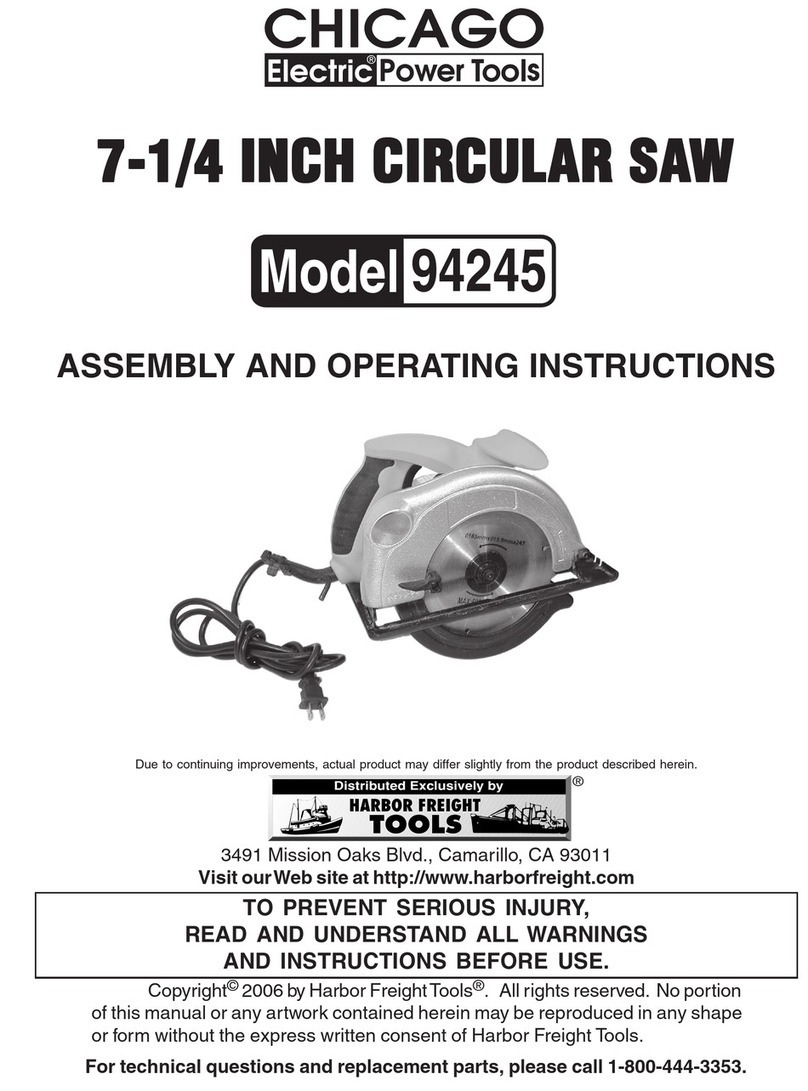
Chicago Electric
Chicago Electric 94245 Assembly and operating instructions
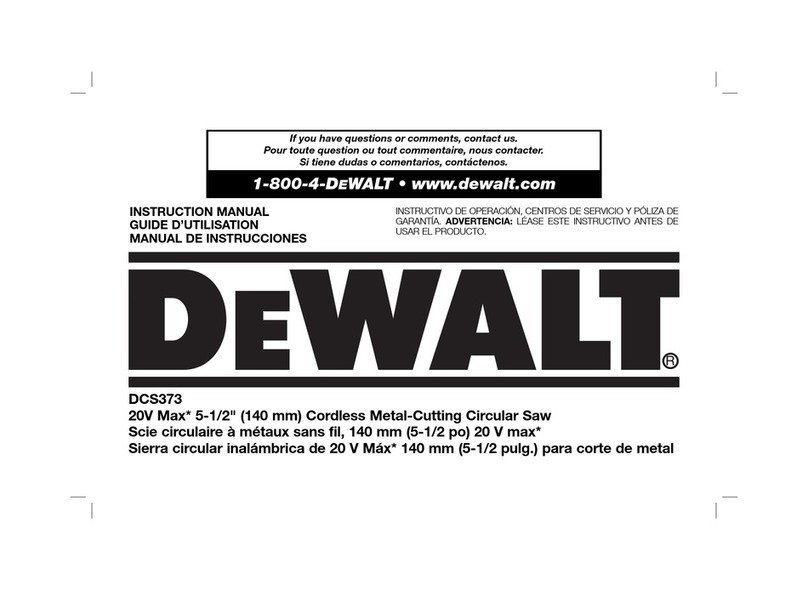
DeWalt
DeWalt DCS373 instruction manual
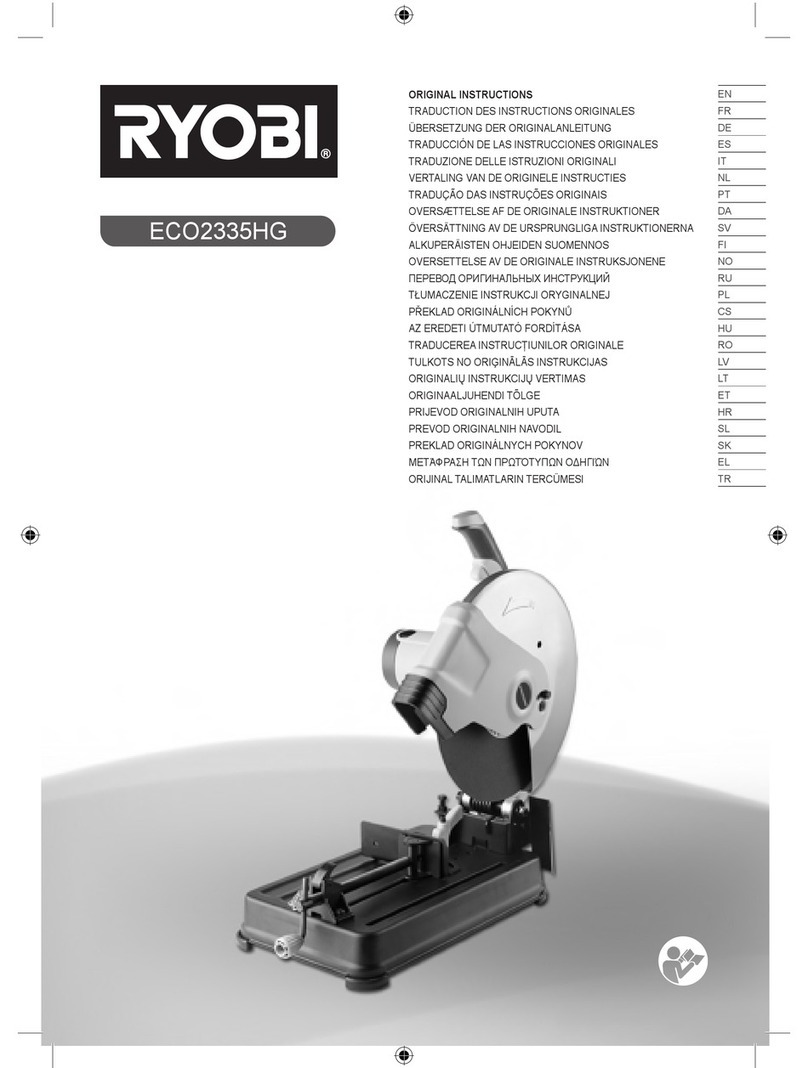
Ryobi
Ryobi ECO2335HG Original instructions
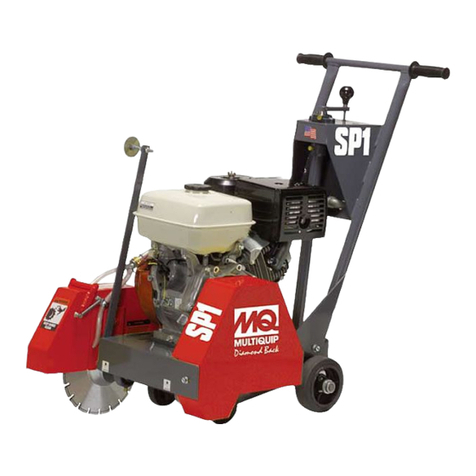
MULTIQUIP
MULTIQUIP SP113H18 Operation and parts manual
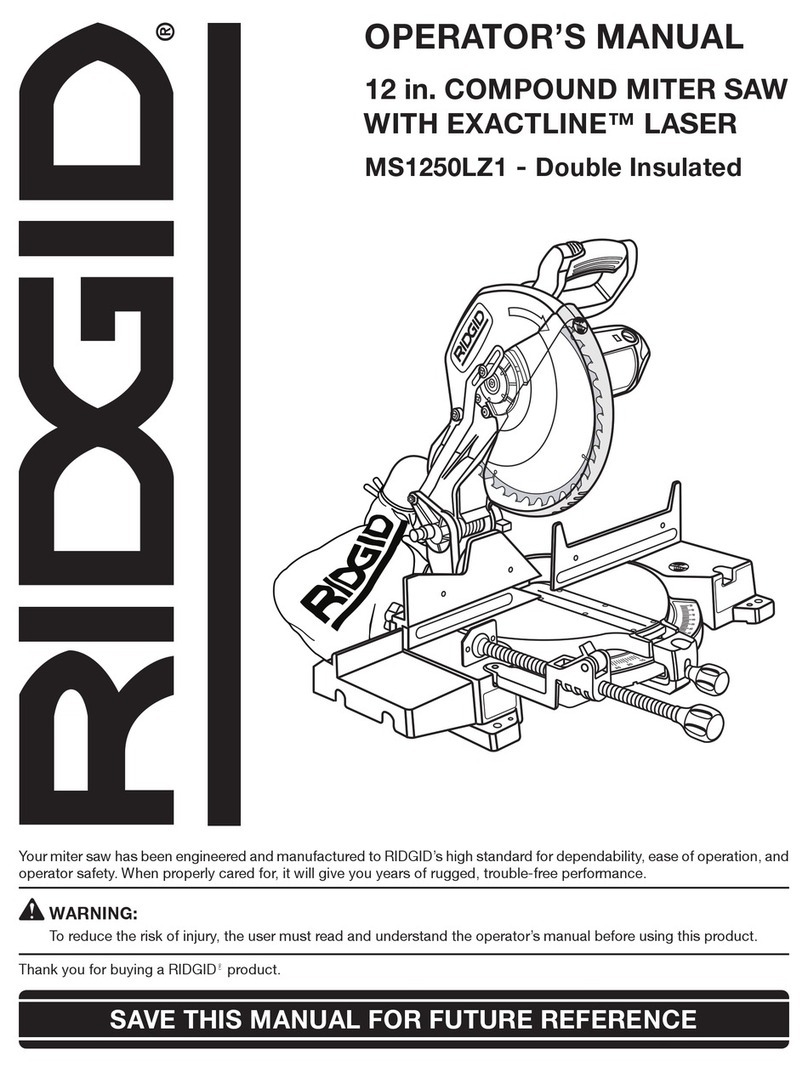
RIDGID
RIDGID MS1250LZ1 Operator's manual
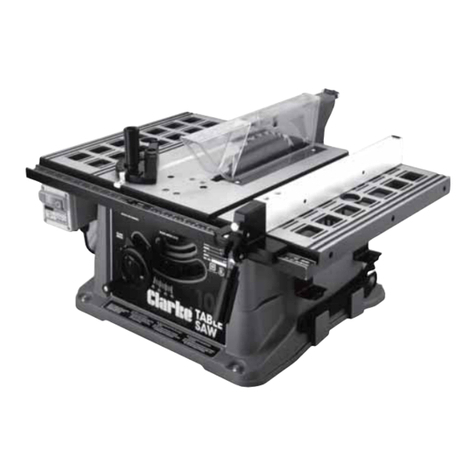
Clarke
Clarke Woodworker CTS10PLM operating & maintenance manual



